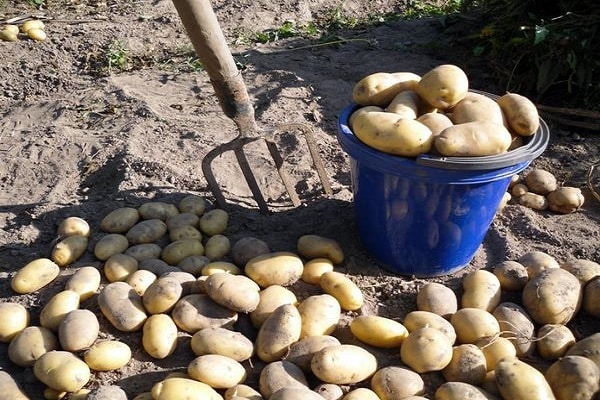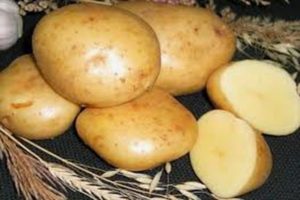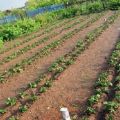When can you dig young potatoes after flowering?
For a novice gardener, the presence of potato beds in almost every neighbor's plot gives rise to the illusion that growing a crop is a task subject to any beginner. However, such a delusion lasts exactly until the time comes when you need to dig potatoes and, in fact, take stock of all the efforts expended.
The experience of experienced owners of personal plots shows - even compliance with all the rules agricultural techniques in the process of growing potatoes, does not exclude the loss of a crop only due to non-compliance with the timing of harvesting and improper preparation for this final stage of all manipulations.
Factors affecting the ripening of potatoes
The manuals on agrotechnics indicate the average data on the timing of digging up potatoes, corresponding to the climatic features of central Russia - this is approximately from 17-20 August to 10-15 September. However, it is necessary to adhere to these terms with an eye to a sufficiently large number of additional factors that can significantly move the period of potato readiness for digging in one direction or another.
Potato ripening time depends on the following conditions:

- the developmental features of a particular potato variety - to find out the details of planting dates and the period when you need to dig potatoes, you need to contact the seller of seed material;
- the time the seed was planted in the ground - than before seed potatoes was lowered into the holes, the earlier it and dig;
- the degree of care, the presence or absence of fertilizing - the application of fertilizers in excess of the norm entails a violent increase in the green mass of tops to the detriment of the harvest, but the complete absence of fertilizing will negatively affect the harvest, because then there will be almost nothing to dig;
- the qualitative composition of the soil under the potatoes - the poorer the land, the faster the tubers will be ready for digging, but the poorer the harvest;
- the amount of moisture maintained in the soil - in overdried soil, the tubers will ripen a week or a half earlier than the due date, but they will be small and rare.
It is important to remember that even the simultaneous planting of several potato varieties similar in terms of ripening does not mean that the harvest will take place simultaneously.

Signs of ripening potatoes
There is nothing wrong with digging up a few kilograms of potatoes for dinner a few days before it reaches full maturity - there are lovers of just such a very young and slightly unripe root crop. Another thing is to dig potatoes for future storage.Here it is important to define specifically "that day", which by all indications will indicate the optimal maturity of the culture.
Potato ripening signs apply to all varieties of crops:

- The appearance of the green mass (tops) of potatoes. You can look closely at the state of the deciduous part of the bush starting from 65 days from the emergence of shoots - during this period, the tops show the first signs of wilting. On 85–95 days, when the tops turn yellow, you can already plan to harvest.
- Type of potatoes. To assess this factor, you need to dig 2-3 potato bushes at different ends of the garden and remove a couple of root crops from each plant. It is simple to determine the state of the tuber - you need to rub the potato with your finger with effort and, if the peel does not reach for your finger, then it's time to dig the crop.
- Characteristics of the soil surface around the bushes. As the ripe potatoes will expand the soil around the root system, the ground under the bush will be cracked and raised into a mound.
To understand if you can already dig potatoes, you should resort to other tricks. You need to drop a little iodine alcohol solution on the tuber cut - it should turn pale purple. Another sure sign of a crop's readiness for harvesting is to dig up one bush and, holding it by the tops with one hand, with the other tear off the bottom of the tubers from the root system. For potatoes that have reached maturity, they will be removed without effort.
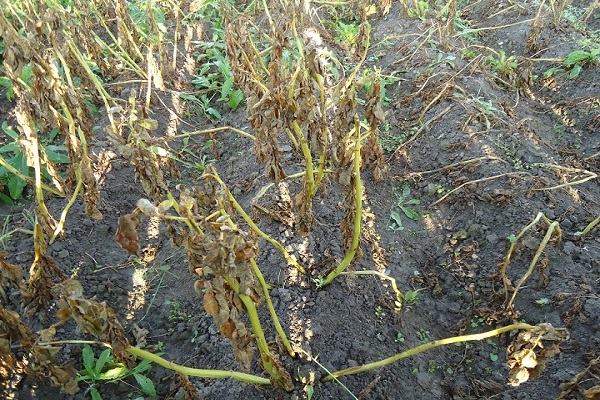
Weather forecast and harvest
Potatoes ripen most quickly during the period of strong summer heat, and if we add occasional watering to the factor of prolonged heat, the harvest time generally shifts to the first August decade. When the weather forecasts indicate the approach of prolonged rains, it is better to accelerate the ripening of potatoes using any of the available methods and have time to dig up the roots before the water flows onto the ground.
The most favorable conditions for digging potatoes come when the air temperature is not lower than 13 and not higher than 18 C, and the weather is sunny. Thus, harvesting potatoes smoothly turns into timely drying of tubers.

How does the variety affect the ripening period?
It is very important to choose the right potato variety for planting, focusing not so much on the promised yield, but on the degree of adaptation of the variety to the specific climatic and weather conditions of the region. It is known to divide all varieties of culture into 5 categories:
- An early ripe species that allows you to harvest as early as 60 days from the day of planting.
- Medium early species, ripening at about 70 days.
- A mid-season species that allows you to dig potatoes 90 days from planting.
- Medium late species, ripening on day 100.
- A late-ripening species preparing for harvest after 100 days from planting.

It is clear that in central Russia, it is unreasonable to select varieties belonging to the last two categories of maturation - they are more suitable for the southern region. Also, for our compatriots of the temperate climatic zone, it is irrational to stop choosing super early varieties of potatoes - the tubers simply will not have time to gain enough solar heat and will be poor in vitamin composition.
Tuber harvesting methods
The easiest way to collect potatoes is to use a special technique - a walk-behind tractor, however, not everyone can afford such equipment, and it is applicable mainly to large plots, and not several beds within a personal plot. In ordinary dachas, tubers are harvested manually, using a pitchfork or a bayonet shovel.
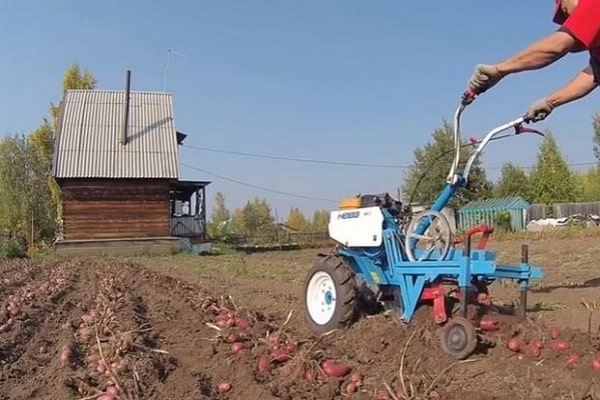
Using any mechanical method, one should come to terms with a certain percentage of "rejects" - damaged potatoes, of which the most intact should be immediately recycled, and heavily cut ones should be thrown into a compost pit for rotting.The least amount of waste is obtained when potatoes are harvested on light soils. In this case, the root system is completely removed from the ground with one push on a forks or a shovel and does not require repeated immersion of a sharp tool into the ground.
Rules for operating the walk-behind tractor
If the whole vegetable garden, given for cultivation, takes 1-3 weave, buy a unit with a capacity of more than 3 liters. with., irrational. Digging potatoes with such a device is not difficult - you need to immerse the pointed element of the mechanism in the ground and follow the device, holding it on the line of the garden.
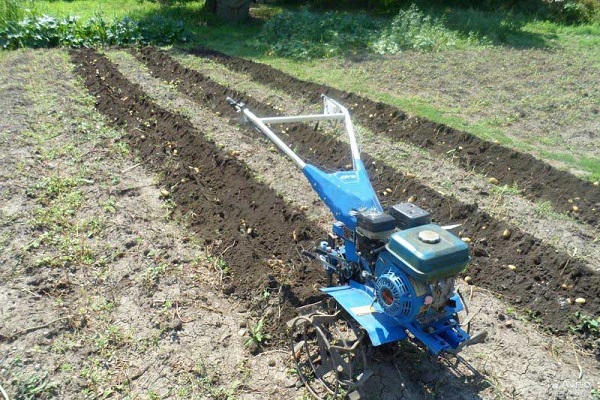
Should be in advance, even before planting potatoes, to decide on the method of harvesting a good harvest, since for manual digging of tubers the distance between the rows of bushes does not matter, but for the movement of the walk-behind tractor, it should be at least one and a half of the body of the apparatus. In any case, the distance between the rows should not be less than 45 cm, and deepening of the lower tubers is allowed by 20-25 cm.
Digging potatoes using a medium-power walk-behind tractor takes several times less time spent exclusively on manual labor. When working on a plot together (the second person follows the mechanism and picks potatoes from the ground), it takes, on average, 10 minutes per one hundred square meters of the garden.
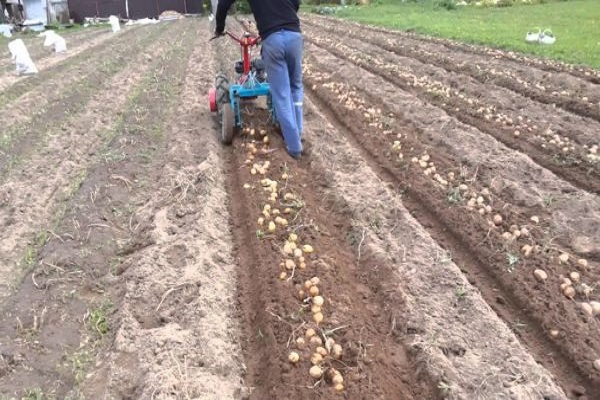
Digging by hand
It is best to dig potatoes by hand with a pitchfork, but if the soil is not too viscous and heavy, a bayonet shovel will also do a good job, however, it is strictly not recommended to break the clods of earth in which the roots are hidden with it. The digging technique is extremely simple:
- at a distance of 15–20 cm from the bush, tool at an angle of 30 plunges into the soil, followed by pressing on the concessions of the shovel or pitchfork and slightly raising the clod above the soil level;
- after that, the bush should be firmly grasped by the tops and pulled up, until it is completely removed from the ground;
- if the tops are dry and easily breaks or the ground is too tight and does not let go of the rhizome dotted with tubers, you need to carefully dig in the bush on the other side and turn out the clod of earth along with the root crops.

In good dry weather, it is necessary to immediately sort the potatoes into edible tubers and seed tubers that are too small for food. To do this, you need to spread two squares of polyethylene near the garden bed and drop large root crops on one of them, and small ones on the other. Potatoes cut or damaged by insects are removed in a separate bucket.
Why do you need to dig up potatoes on time?
There are plenty of reasons to be careful about planting and harvesting dates, and it's not just about the excellent taste of well-ripened potatoes. Continuing to grow plants after the onset of the rainy season in order to "bring" the tubers to a larger size, the gardener risks losing the entire crop, because at temperatures above 10 With the incessant rains, withering, it was, the tops of the potato bush are greening again, and the roots are beginning to sprout.
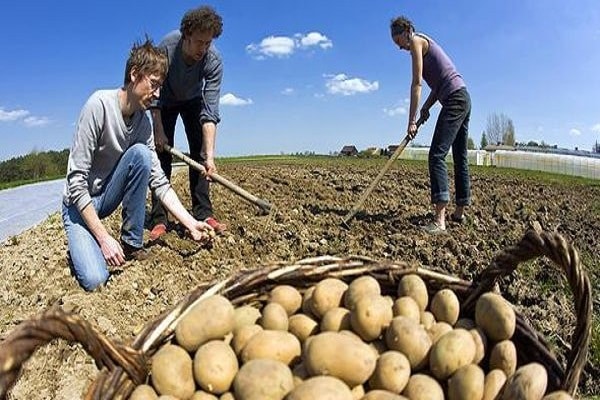
Another danger of overexposing potatoes in the soil lies in the early autumn frosts. One or two frosty nights that covered the ground with hoarfrost reduce the possibility of harvest safety in winter by 70%. Such tubers, after being removed from the soil, quickly begin to rot, and when cooked give an unpleasant sweetish taste.
The postponement of the harvest time to a period earlier than it should be according to the potato variety does not entail anything good.
Unripe tubers have an inferior taste, watery pulp structure. The content of vitamins and microelements in them is much lower than in a mature culture, which significantly reduces the nutritional value of the product. In addition, in unripe root crops, the peel is too thin and easily damaged, therefore, potatoes dug out without taking into account the signs of maturity cannot be stored and are suitable only for consumption in the first week or two after digging up.
